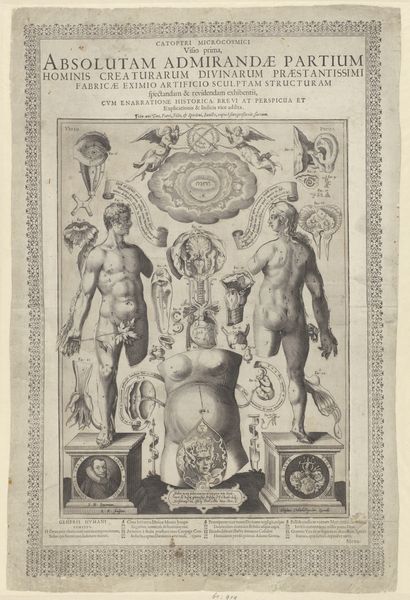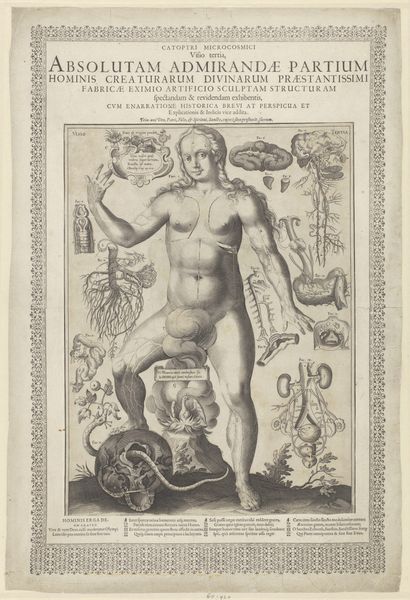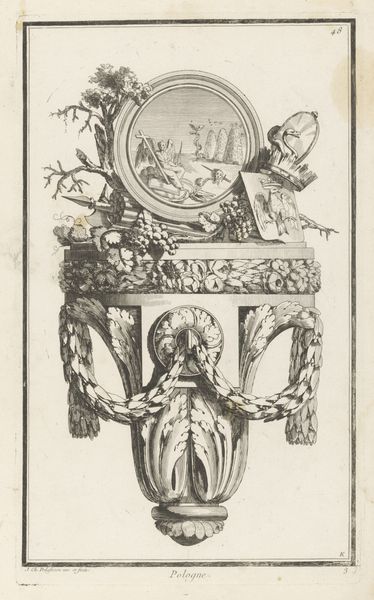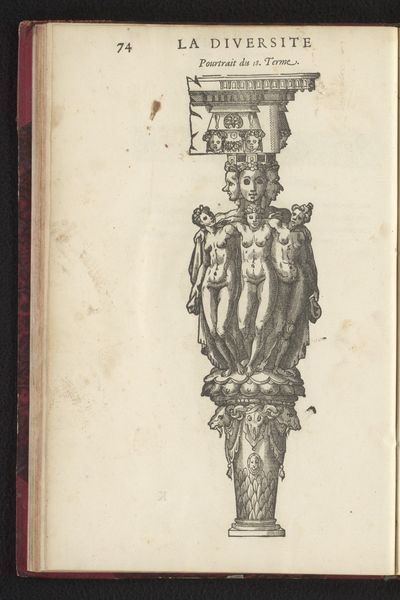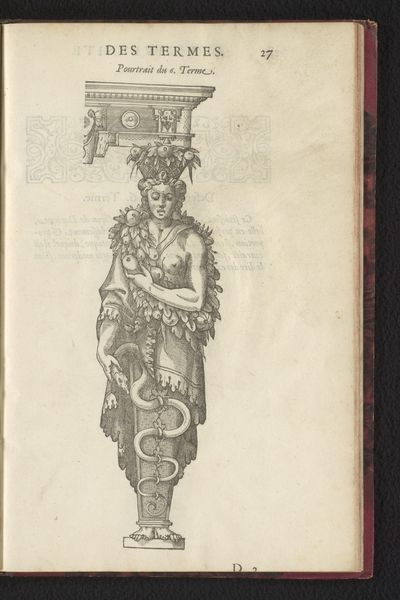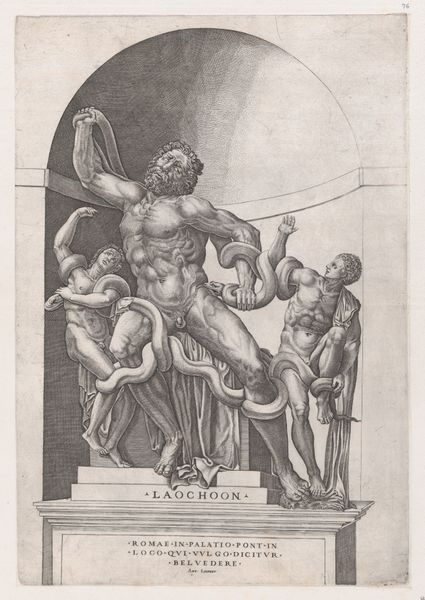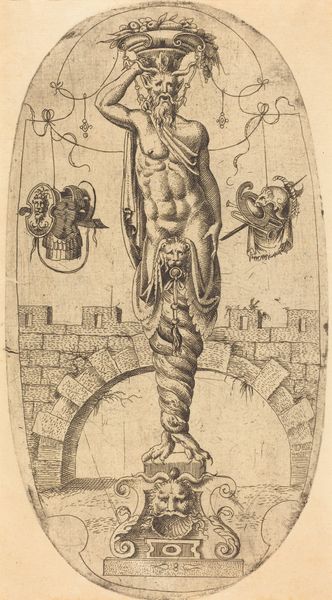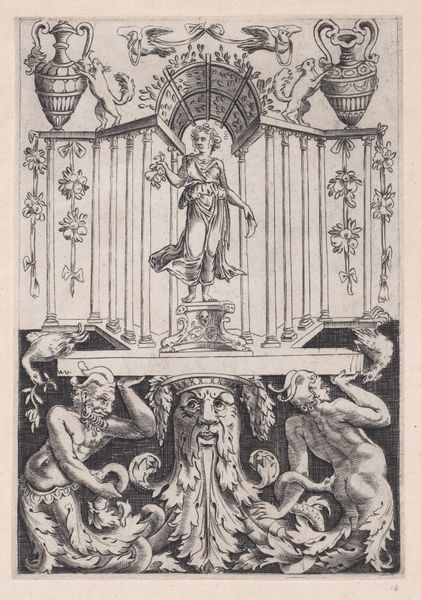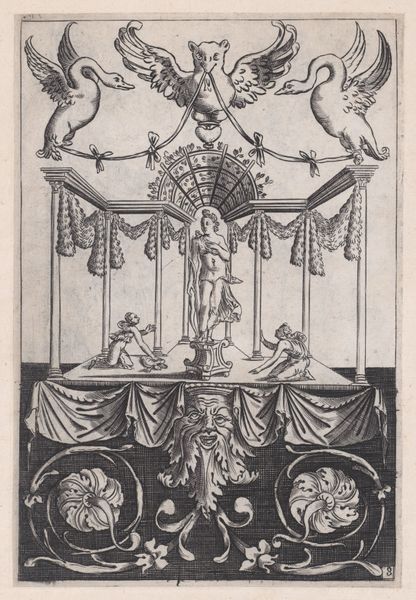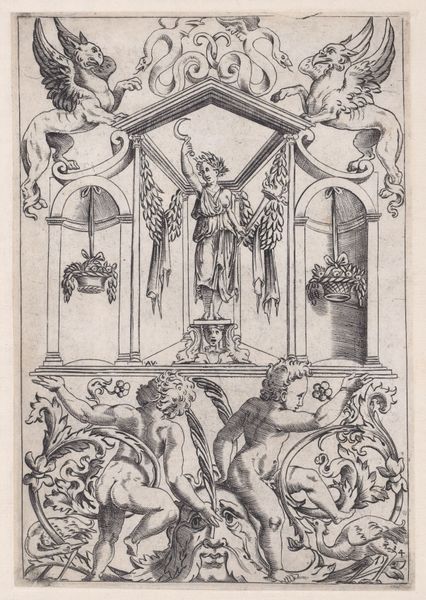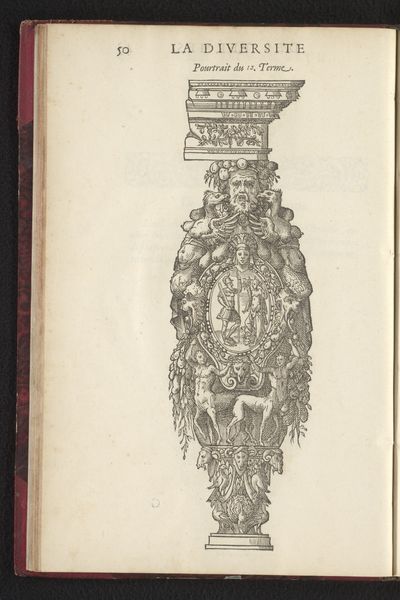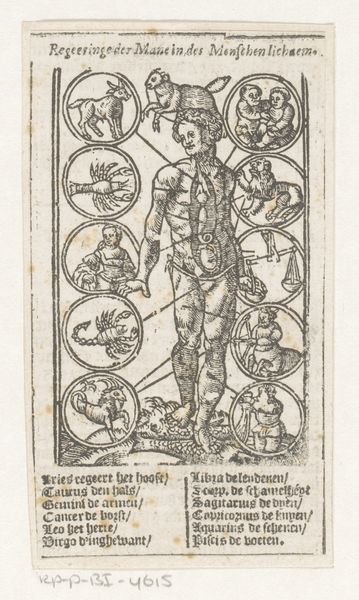
drawing, print, intaglio
#
portrait
#
drawing
#
allegory
# print
#
intaglio
#
mannerism
#
figuration
#
11_renaissance
Dimensions: Overall: 11 1/16 x 7 11/16 x 3/16 in. (28.1 x 19.6 x 0.4 cm)
Copyright: Public Domain
Curator: This is "Designs for Terms" by Jean Mignon, created sometime between 1538 and 1548. It’s currently housed at the Metropolitan Museum of Art. The medium is intaglio, a form of printmaking. Editor: My first impression is one of curious elegance. The composition feels almost theatrical, with this central, somewhat imposing figure, flanked by smaller, more mischievous characters. I am immediately drawn to the stark lines and delicate cross-hatching. Curator: Indeed. The artist worked in the Mannerist style, which emphasized elegance and artificiality. "Designs for Terms" is an allegorical image. We might consider its status alongside representations of male power during this time. Who held authority? Who was permitted to possess artistic license to create such images? Editor: And what about the process of creation? This would have required great skill and labor. Look at the tooling around the body. What materials would Mignon have used? I'd be fascinated to delve deeper into the actual plates, inks, and papers employed. How were they sourced and what would have determined the aesthetic outcome. Curator: We can interpret this print as an exploration of masculine ideals. This almost unsettling figure and its attendants perhaps reflects broader cultural anxieties regarding power, sexuality, and perhaps, even social order at the time. Mignon was not alone in his use of classically derived symbology as he attempted to work through contemporary values. Editor: Looking again, the way Mignon uses intaglio heightens my sense of detail, adding texture and volume to what could otherwise be just a very bizarre character design! How do these lines speak to a culture that placed so much emphasis on visual rhetoric. It seems so labor intensive in its methods. What did people consider art during this period, how was value assigned to those doing it. Curator: It’s that careful arrangement that creates the layered narratives so important to understanding the Renaissance's engagement with symbolism and philosophy. But your perspective brings vital focus back onto the material aspects. After all, isn’t the survival of the artifact itself an important factor in determining value and informing legacy? Editor: Precisely. The very means of production shape its cultural reception and endurance. Curator: Reflecting on this work, I am reminded of how crucial it is to unpack historical context while examining representations of identity and power. Editor: Absolutely. The labor and materiality inherent in the artwork are key to deciphering both its social and historical relevance, even today.
Comments
No comments
Be the first to comment and join the conversation on the ultimate creative platform.

